Chapter 4. Project Planning and the Project Scope
4.5 Microsoft Project Tutorial
Microsoft Project is one of the most common software tools in project management worldwide. In this book, we use Project Professional 2019. The tutorials in this book apply to all the recent versions of Microsoft Project.
When you open MS Project for the first time, you can open a “Blank Project” or select a template (Figure 4.5.1).
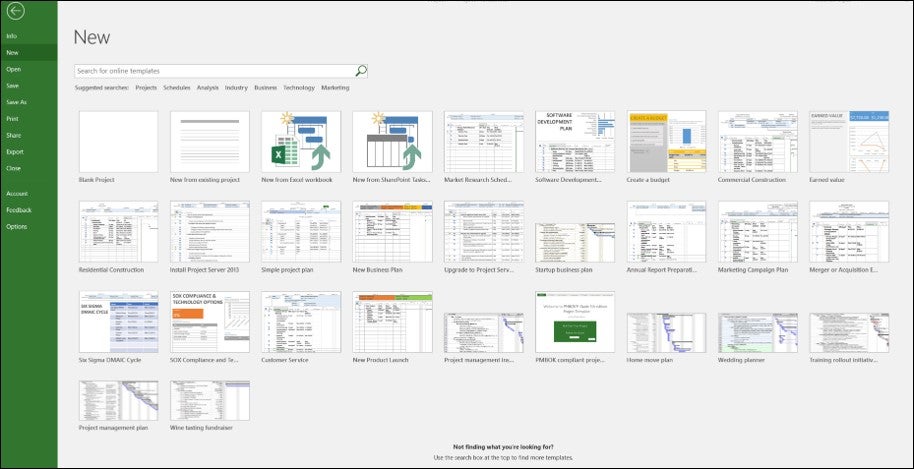
When you select “Blank Project,” the project page will open with a ribbon that includes tabs (in the same format we have on Microsoft Office programs such as Word, Excel, and PowerPoint) (Figure 4.5.2). While the default view is “Gantt with Timeline,” we changed it from “Options” to “Gantt Chart” view. Therefore, Figure 4.4 doesn’t display the timeline. In Figure 4.5.3, under Project View, the default view is set as Gantt with Timeline.
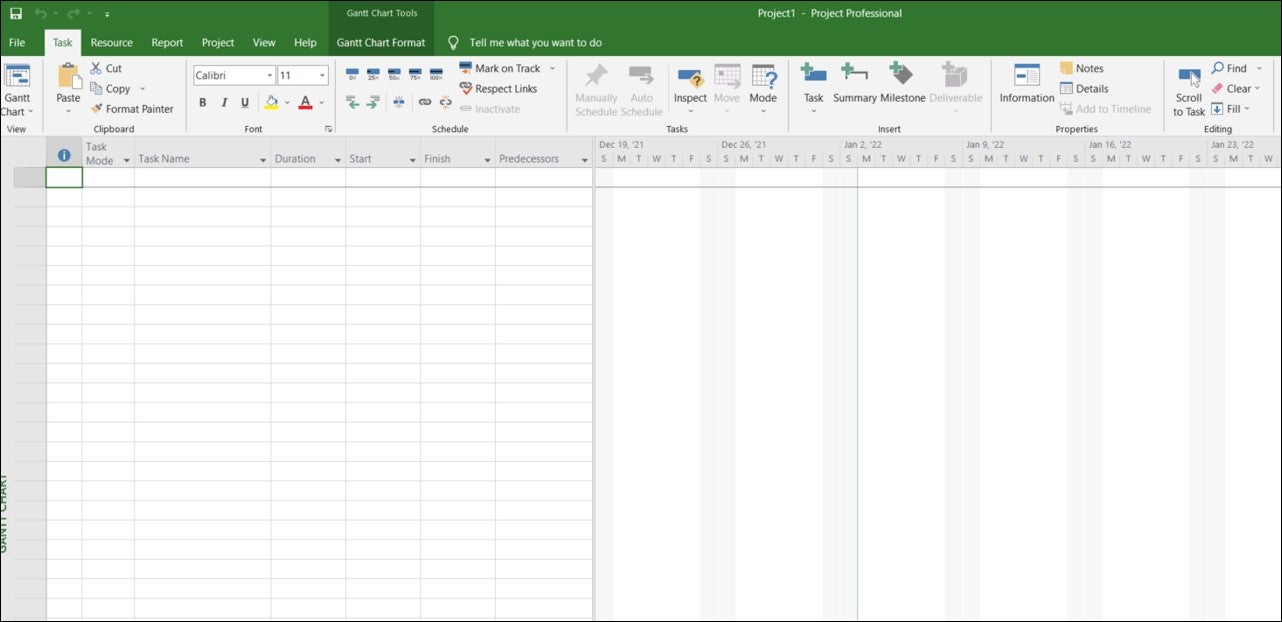
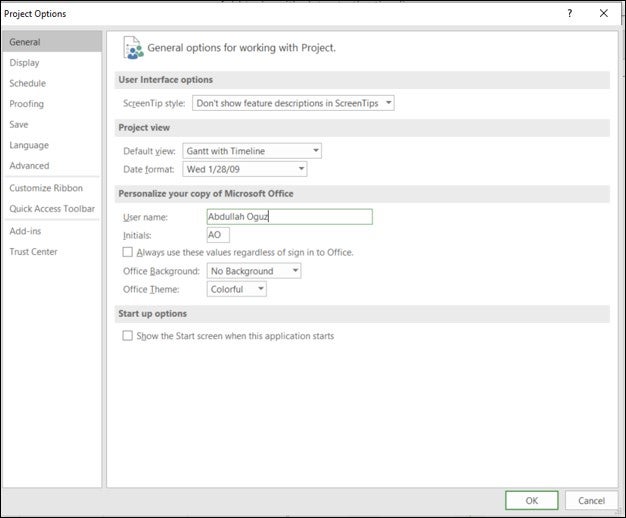
We will use “Gantt with Timeline” as our default view in this chapter’s tutorial and the following chapters. Besides, we are not changing the schedule options. This means we are not working on the weekends, and our durations are automatically labeled “days.” However, we can type another unit such as a week (wk or wks) or month (mon or mons) (Figure 4.5.4).
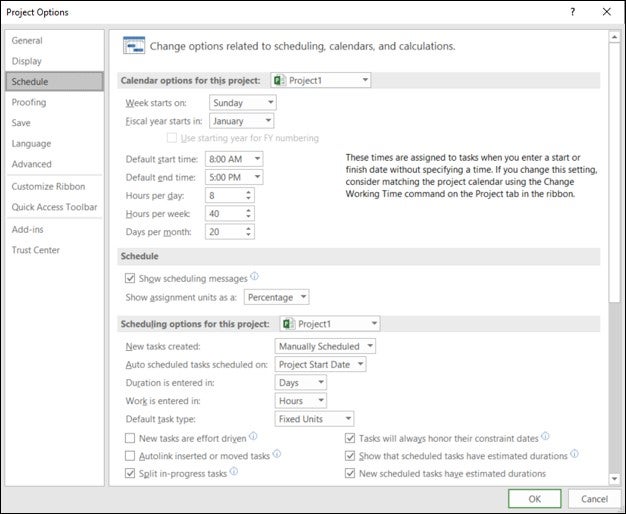
Under the “Format” tab, we should check “Project Summary Task” first. Therefore, the total duration of our project can be automatically calculated by MS Project. The row number becomes zero for the project summary task (Figure 4.5.5). If we insert a column titled “WBS,” the system also gives zero to this task. MS Project doesn’t use the name “Activity” but “Task.”

For this MS Project tutorial, we will use letters and numbers for the activities. A is the project, and the highest level is 1. The lowest level in our WBS is the third level (Table 4.5.1).
| WBS Level | Activity |
| 1 | A |
| 2 | a1 |
| 2 | a2 |
| 3 | a21 |
| 3 | a22 |
| 1 | B |
| 2 | b1 |
| 3 | b11 |
| 3 | b12 |
| 1 | b2 |
After we type all the activities, we can select a1 and a2, and indent them as both are under A (Figure 4.5.6). WBS numbers are given automatically by MS Project when we indent and outdent. After we indent a1 and a2, these two activities can be subtasks of A, which could be considered a phase or major deliverable.
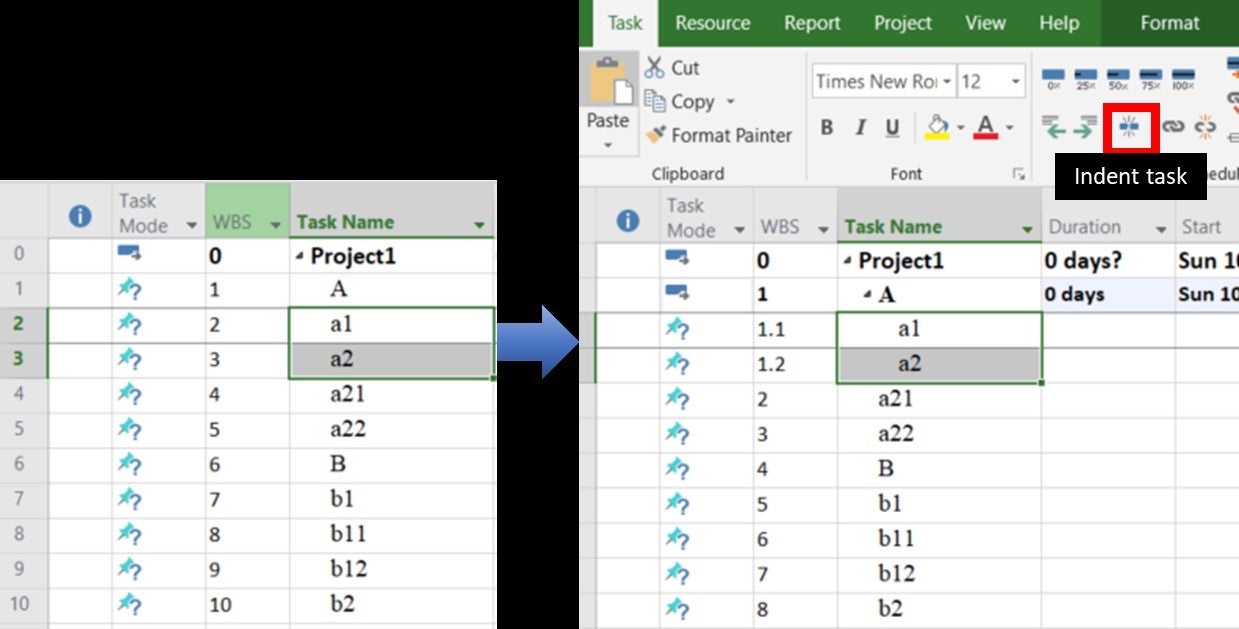
For a21 and a22 at the third level, we should click the “Indent Task” icon twice, as they are under a2 at the second level. Figure 4.5.7 displays the WBS numbers after all the activities have been indented.
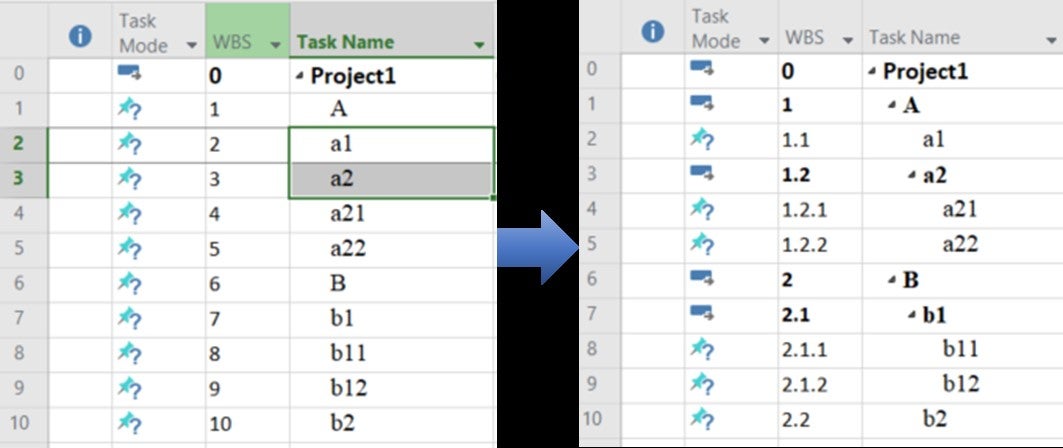
As can be seen in Figure 4.5.7, WBS numbers changed automatically when we indented the tasks. This tutorial served as an introduction to Microsoft Project and only discussed how a WBS can be created. Therefore, we have not typed the durations and predecessors. We will cover them in Chapter 7, “Scheduling”.

